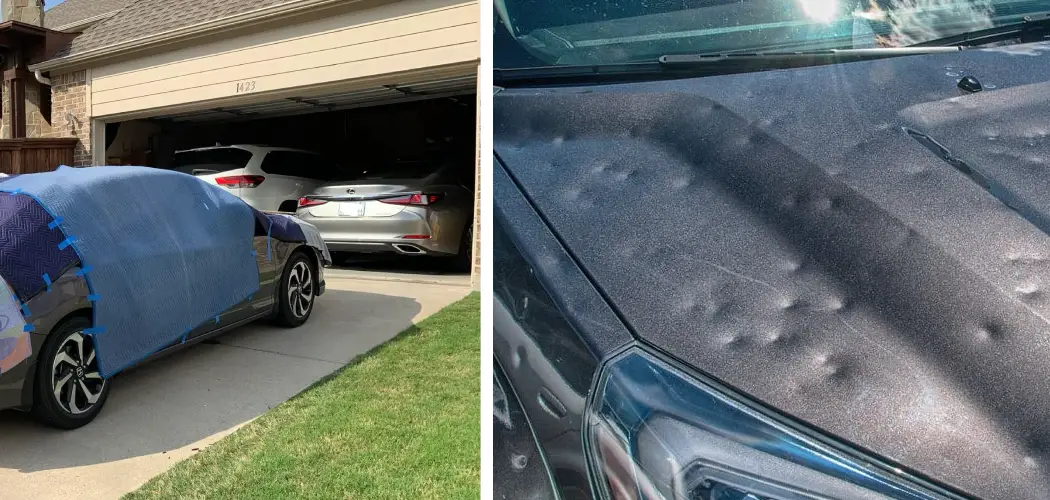Have you ever been caught in a hailstorm without any shelter for your car? The sharp cracks of hail can leave deep dents that mar the surface of your car and give it an aged look, but don’t despair—there are lots of ways to protect your car from hail damage even if you don’t have access to a garage.
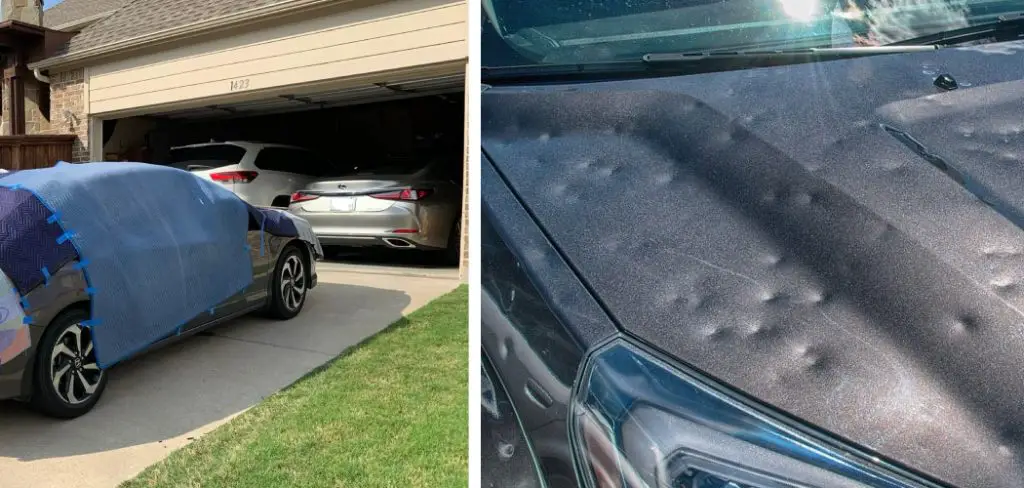
In this blog post, we’ll discuss practical strategies for protecting your vehicle from hail on those days when the sky unleashes its fury.
From wrapping your car in blankets to finding parking spaces underneath trees, we’ll share some great ideas about how you can keep your car safe without having to resort to buying an expensive storage structure or renting out space in someone else’s garage. Read on how to protect car from hail without a garage as we explore different tactics and tools that will help ensure that pure gloss remains intact!
Needed Materials
Before we dive into different strategies for protecting your car from hail, let’s first go through the materials you’ll need. For most of these methods, you’ll need some basic items that are easily accessible and affordable.
Blankets or Tarps:
These will serve as a barrier between the hailstones and your car’s surface.
Cardboard Boxes:
These can be used to cover specific areas of your car, such as the windshield or windows.
Padding (Optional):
If you have access to some foam padding, this can be placed on top of your blankets for extra protection.
Tree Coverage:
If you’re lucky enough to find a parking spot underneath trees with thick foliage, this will provide natural protection from hail.

11 Step-by-step Guidelines on How to Protect Car From Hail Without a Garage
Step 1: Check the Weather Forecast
If hail is expected, plan ahead and take necessary precautions to protect your car. It’s always better to be safe than sorry! But if you’re caught off guard, don’t worry, we’ve got you covered.
You can quickly implement any of these steps to protect your car from hail. This is where having the necessary materials at hand will come in handy. You can also use a hail prediction app to stay updated on potential storms.
Step 2: Park Your Car Inside If Possible
If you have access to a covered parking area, such as your work parking lot or a friend’s garage, this is the best option. You can protect your car from hail and other elements like rain and snow by keeping it sheltered.
It’s also a good idea to park your car facing away from the direction of the wind to further minimize hail damage. You can also try to find a spot near a building or tall structure that can act as a shield.
Step 3: Cover Your Car With Blankets or Tarps
If you don’t have access to covered parking, one of the most effective ways to protect your car from hail is by covering it with blankets or tarps. If possible, secure the coverings with bungee cords or ropes tied to the car’s undercarriage for added stability.
It’s good to have someone else help you with this step, but it can also be done on your own. But make sure to avoid using tape as it can damage the car’s paint.
Step 4: Utilize Cardboard Boxes
For extra protection, you can use lightweight cardboard boxes to cover specific areas of your car, such as the windshield and windows. You can find these at home or in grocery stores. It’s best to use large boxes and secure them with tape or rope.
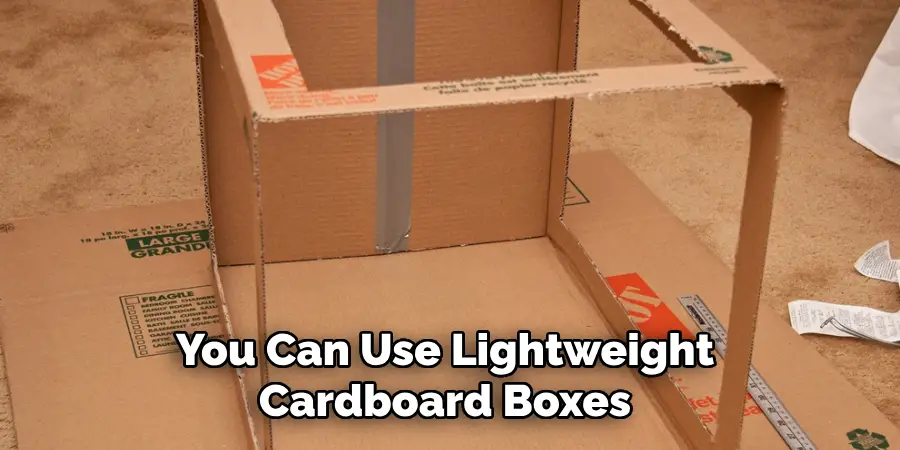
Be sure to leave enough space between the box and the car’s surface to avoid any scratching. You can also use a box to cover the entire car if you have enough boxes available.
Step 5: Add Padding for Additional Protection
If you have access to some foam padding, this can be placed on top of your blankets and tarps for extra protection against hailstones. You can use old cushions or pillows as well. Just make sure they are secured in place with ropes or bungee cords. It’s also a good idea to cover the padding with an extra layer of blankets or tarps to prevent any moisture from seeping through.
Step 6: Find a Natural Shelter
If you’re unable to find covered parking, try to locate natural shelter such as trees with thick foliage. This can provide a significant amount of protection from hail. Just be sure the tree is strong enough and not at risk of falling branches during a storm.
It’s also essential to park at a safe distance from the tree as strong winds can cause branches to fall. But if it’s your only option, it’s better than leaving your car completely exposed.
Step 7: Face Your Car Away From the Direction of the Wind
If you can’t find any shelter or coverings for your car, try to park it facing away from the direction of the wind. This can help reduce hail damage as the forcible impact of a hailstone hitting your car will be lessened.
It’s also a good idea to keep your windows slightly open to avoid pressure build-up inside the car during a storm. It’s best to do this only if your car is completely covered by blankets or tarps.
Step 8: Use Sunshades or Car Covers
Although not as effective as blankets or tarps, using sunshades or car covers can provide some protection against hailstone impacts. These are readily available at most auto supply stores and are relatively inexpensive.
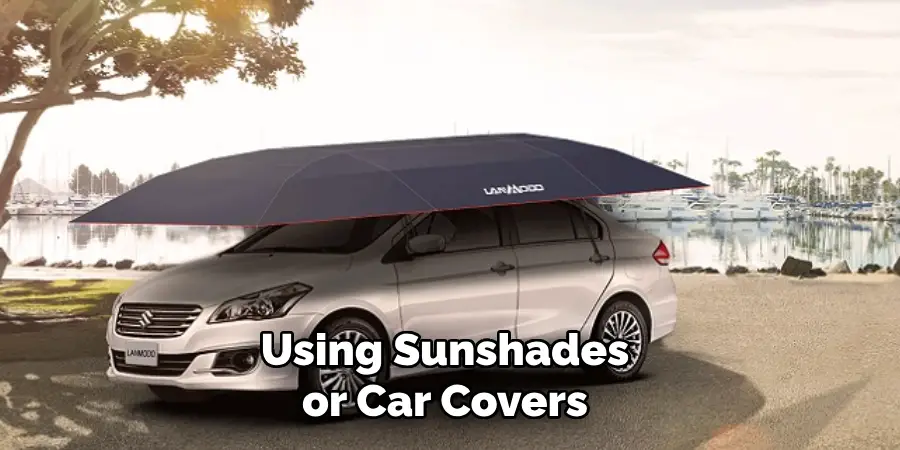
They can also help protect your car from other elements like UV rays and bird droppings. Just make sure they are securely fastened to avoid any damage caused by strong winds. This can be especially helpful if you’re caught off guard by a sudden hail storm.
Step 9: Monitor Your Car During the Storm
If you’re nearby during a hailstorm, it’s a good idea to check on your car periodically. If you notice that the coverings or padding have shifted, try to adjust them back into place. It’s also essential to keep an eye out for any potential hazards like falling branches or debris. If possible, move your car to a safer location if you feel it’s necessary. It’s always better to be cautious and prevent any potential damage.
Step 10: Wait for the Storm to Pass
Once the storm has passed, it’s time to assess the damage. If you follow these steps, your car should have minimal or no hail damage at all. Carefully remove all coverings and padding from your car before driving away.
It’s also a good idea to check for any signs of dents or scratches. If you notice any damage, take photos and contact your insurance company as soon as possible. You may also need to take your car to a professional for repairs.
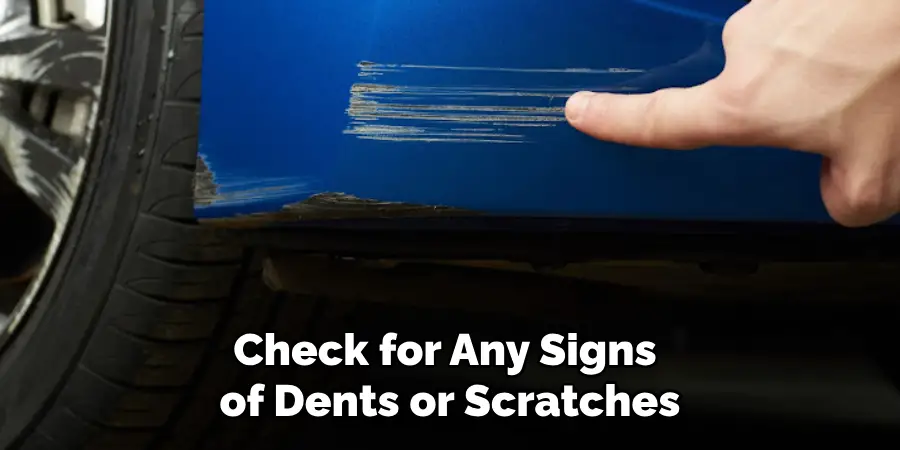
Step 11: Be Prepared for Future Storms
As they say, prevention is better than cure. It’s a good idea to invest in a car cover or have some blankets and tarps ready at home in case of future hailstorms. You can also check your local weather forecast regularly for any potential hail storms to prepare in advance. It’s always better to be prepared than to scramble during an unexpected storm.
These steps on how to protect car from hail without a garage may seem like a lot of work, but the protection they provide can save you from costly repairs and insurance claims. Whether you have a garage or not, these guidelines can help you keep your car safe during a hailstorm. Remember to always prioritize safety and assess any potential risks before taking any action.
Stay informed, stay prepared, and keep your car protected from hail damage. So next time a storm is approaching, don’t panic – follow these steps and rest easy knowing your car is well-protected. Happy driving!
Things to Consider
- The Importance of Staying Informed and Prepared for Potential Hail Storms
- The Benefits of Taking Preventative Measures to Protect Your Car From Hail Damage
- The Potential Cost Savings in Avoiding Hail Damage Repairs or Insurance Claims
- Additional Tips on How to Protect Your Car During a Hailstorm, Such as Checking on the Car Periodically and Monitoring for Hazards.

It’s also important to note that these steps may not guarantee complete protection from hail damage. In severe storms, it’s possible for even the most well-covered cars to sustain some level of damage. In these cases, it’s best to prioritize your safety and the safety of those around you. Remember that a car can always be repaired or replaced, but lives cannot.
Stay safe and take necessary precautions during hailstorms. Overall, knowing how to protect your car from hail without a garage can save you time, money, and a lot of hassle in the long run. Don’t wait until it’s too late – start preparing today!
Frequently Asked Questions
Q1: Can Hail Damage Be Prevented Completely?
A: While it’s difficult to completely prevent hail damage, following these steps can significantly reduce the chances of any major damage occurring to your car. It’s best to be prepared and take precautions to protect your vehicle.
Q2: Can I Use Any Type of Blanket or Tarp to Cover My Car?
A: It’s best to use a thick and sturdy material, such as heavy-duty blankets or tarps, for maximum protection. Avoid using any materials that may scratch or damage your car’s surface.
Q3: How Often Do Hailstorms Occur?
A: The frequency of hailstorms varies depending on location and climate. It’s best to keep an eye on local weather forecasts and be prepared for any potential storms.
Q4: What Do I Do If My Car Does Get Damaged by Hail?
A: Take photos of the damage and contact your insurance company as soon as possible. They may provide coverage for repairs or recommend a professional repair service. Remember to always assess any potential risks before taking any action. Safety should be the top priority.
Conclusion
From the DIY methods to using a cover or buying a garage, you have multiple options when it comes to ensuring your car is safe from hail damage. When looking for solutions for hail protection, be sure to look at your budget and decide which one will work best for you. There really is no one-size-fits-all answer; you just need to be sure whatever option you choose works for your particular situation.
And don’t forget—if you live in an area where hail storms are frequent, it may be worth investing in long-term protection like a garage so that you can keep your car safe in the future as well as now. Taking action today with these tips and tricks on how to protect car from hail without a garage can pay off tomorrow, saving you time and money down the line!

